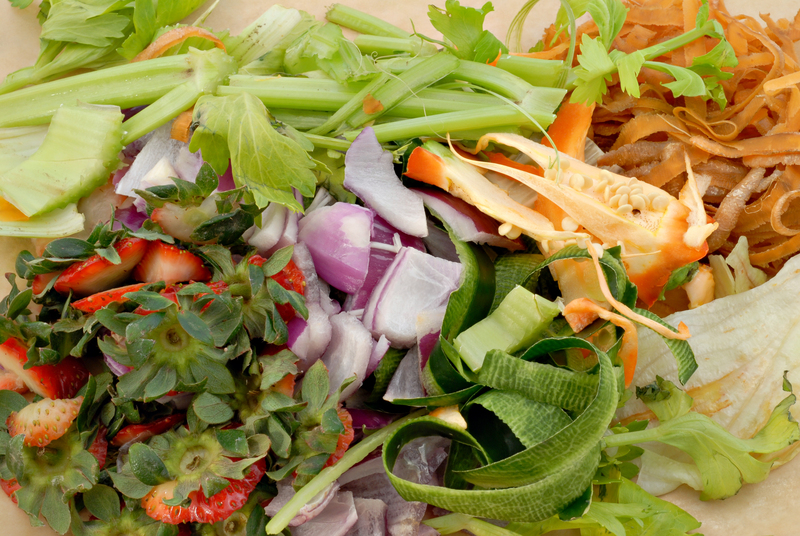Why Recycling Pots and Pans Matters for Sustainable Living
Sustainability starts at home. As we embrace a future centered on green practices, it's vital to rethink how we handle our household waste -- including old or unwanted kitchenware. Recycling pots and pans isn't just about reducing clutter; it's a significant step toward protecting the environment, conserving resources, and building a more circular economy.
Understanding the Environmental Impact of Cookware Waste
Every year, millions of pots and pans are discarded worldwide. These items, made from metals such as aluminum, stainless steel, copper, and sometimes coated with plastic or non-stick materials, eventually end up clogging our landfills. The environmental consequences of improperly disposing of kitchen cookware are substantial.
- Non-biodegradable Materials: Metals and synthetic coatings in cookware do not break down easily. They persist in landfills, taking up space for centuries.
- Toxic Leachates: Cookware coated with Teflon or other chemicals can leak toxins into the soil and groundwater over time, threatening ecosystems.
- Resource Depletion: Mining raw materials to produce new pots and pans consumes significant energy and contributes to resource scarcity.
The recycling of old pots and pans directly addresses these concerns, contributing to a cleaner, more sustainable planet.

Benefits of Recycling Pots and Pans
1. Conservation of Natural Resources
Recycling kitchen cookware allows valuable metals like aluminum, copper, and stainless steel to be extracted and repurposed. Mining for virgin metals is both energy-intensive and environmentally damaging, so reusing existing materials is a big win for sustainability.
2. Reduction of Greenhouse Gas Emissions
The manufacture of new pots and pans from raw materials requires huge amounts of energy, often sourced from fossil fuels. Recycling uses far less energy, thus reducing overall carbon emissions and slowing climate change.
3. Decreasing Landfill Waste
Landfills are overburdened with items that don't biodegrade. By recycling used kitchenware, we shrink the volume of landfill waste and ease pressure on local waste management systems.
4. Supporting Circular Economy
**A circular economy thrives when products are reused and materials are recycled.** Pots and pans that are recycled become raw materials for new products, promoting *continuous resource use* rather than one-time consumption.
Challenges and Misconceptions About Recycling Cookware
Many people assume that all old pots and pans can be tossed into curbside recycling bins. However, kitchen cookware recycling presents special challenges:
- Mixed Materials: Many pots and pans have plastic handles, glass lids, or non-stick coatings. These need to be separated before recycling the metals.
- Contaminants: Grease, food residue, or burnt coatings can hinder recycling processes.
- Non-stick and Coated Pans: Not all recycling facilities accept Teflon or ceramic-coated cookware.
- Local Requirements: Every recycling center has its own policies -- some handle metals, others do not.
*It's important to check with your local recycling program before disposing of kitchen items.*
How to Recycle Pots and Pans Responsibly
1. Check Local Recycling Policies
Contact your local waste management authority or municipal website for information on recycling metal goods. Some centers have designated drop-off days for scrap metals and household items.
2. Prepare Cookware for Recycling
- Remove any plastic, rubber, or wooden parts.
- Scrub off food residue or burnt material.
- If the cookware is non-stick, check for a specialized processing facility.
*Proper preparation increases the chance your cookware will be accepted and efficiently recycled.*
3. Find Scrap Metal Facilities
Many scrap metal recyclers accept old pans and pots, regardless of their condition. Look for local businesses online or use sites like Earth911 to find drop-off locations near you.
4. Donate Usable Pots and Pans
If your cookware is still usable, consider donating it to thrift stores, shelters, or community kitchens. Extending the lifecycle of pots and pans reduces demand for new products.
Creative Ways to Repurpose Old Pots and Pans
Recycling isn't your only option! Many people find creative ways to reuse aged cookware:
- Planters: Old saucepans and woks can be transformed into quirky garden pots for herbs or flowers.
- Organizers: Large stockpots make excellent storage bins for tools, craft supplies, or even office items.
- Decor: With some paint and imagination, chipped frying pans become charming wall art or hanging lights.
Repurposing adds personality to your home while keeping waste out of landfills.
Recycling Different Types of Cookware
Understanding the material composition of your cookware is crucial for proper recycling. Here's a breakdown:
- Aluminum: Highly recyclable and in demand. Ensure it's free from plastic or rubber.
- Stainless Steel: Also widely recycled. Remove non-metal attachments first.
- Copper: Valuable to scrap dealers. Often found in high-end pans.
- Non-Stick Coated Pans: Check if your local facility accepts or specializes in processing PTFE or ceramic coatings.
- Cast Iron: Extremely durable. If unusable, scrap yards accept it; otherwise, consider donating.
- Glass Lids: Usually not recyclable curbside, but some centers accept tempered glass.
The Role of Manufacturers in Sustainable Cookware Disposal
While consumers play a key role, manufacturers also have a responsibility to encourage sustainable kitchen practices. Brands can help by:
- Designing cookware with easy-to-disassemble parts.
- Implementing take-back or recycling programs for old pots and pans.
- Using more recycled and sustainable materials in their products.
- Educating customers about proper disposal methods.
Some forward-thinking brands already offer end-of-life recycling with their products.
Future Trends: Innovations in Recycling Pots and Pans
Increasing awareness of climate change and resource scarcity is driving innovation in kitchenware design and recycling. Expect to see:
- Smart labeling to indicate recyclability and proper disposal methods.
- Growth of specialized recycling plants for non-stick and composite cookware.
- More brands subscribing to extended producer responsibility (EPR).
- Development of eco-friendly cookware made entirely from recycled metals.
Recycling used cookware is becoming easier and more efficient thanks to these technological advancements.

Practical Tips for Integrating Sustainable Kitchen Habits
- Buy for durability: Choose high-quality pots and pans that last for years, if not decades.
- Maintain and repair: Regular cleaning and occasional repairs extend the life of your cookware.
- Follow local recycling guidelines: Always double-check before tossing cookware in the bin.
- Spread awareness: Share what you know about recycling pots and pans for sustainable living with family and friends.
- Support green companies: Look for brands committed to eco-friendly practices and materials.
Every small change helps build a more sustainable household and reduces our collective footprint.
Conclusion: Why Recycling Pots and Pans Truly Matters
In our mission for a greener planet, no household item should be overlooked -- especially not those that make daily life easier. The recycling of pots and pans reduces pollution, conserves vital resources, cuts down greenhouse emissions, and supports a sustainable, circular economy.
By making informed choices about how we dispose of and repurpose our kitchenware, we contribute directly to a cleaner, healthier future for ourselves and generations to come. Remember: even a simple act like recycling your old frying pan can have a lasting positive impact on our environment.
Make recycling pots and pans a routine part of your journey toward sustainable living -- because every action, no matter how small, truly matters.